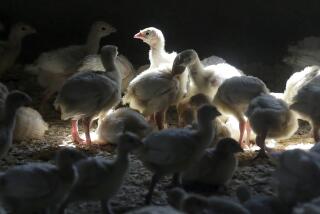Some viruses have history of foreshocks
H1N1 swine flu may be fading from the news some, but the number of confirmed cases nationwide has been higher than is usual for seasonal flu in the month of May. What does that mean? Is this flu’s ability to linger into the spring suggestive of how different a beast it is? And what does it portend for how the virus might infect Americans over the summer and come fall?
The Centers for Disease Control and Prevention publishes confirmed cases of the novel H1N1 swine flu virus each week. The official count of probable cases in the U.S. as of Friday was 8,975 in 49 states with 15 deaths. However, the total number of people infected in the country is estimated to be as high as 100,000, says CDC spokesman Joe Quimby, taking into account those who were sick but didn’t seek medical care.
For the most part, the H1N1 virus doesn’t act very differently from our contemporary flu strains in terms of how sick people get and how easily it is transmitted from person to person, says Ira Longini, an expert in modeling the spread of infectious disease. Its lingering presence in the spring is probably because nearly the entire human population is susceptible to infection with it.
“Usually, we have some protection, even [in] children, due to past illness or vaccination,” Longini says. But with swine flu, that’s not the case. “So it’s going to spread very easily when it’s introduced into families and schools,” causing sickness even at a time outside of the flu’s normal season.
Merely an omen?
Why seasonal flu winds down every spring is not entirely clear, but contributing factors may include a change in climate -- flu viruses survive longer in cooler, drier air -- and a dwindling number of susceptible people. The spread of swine flu may be interrupted by warmer weather and by schools letting out for summer.
Or it may not. “When you have a highly transmissible, immunologically novel virus, you can have widespread epidemics throughout summer,” says Don Olson, research director at the nonprofit International Society for Disease Surveillance in New York. “Our population level of immunity is just poor enough that we’re kind of like dry wood.”
In 1957, for example, there were summer outbreaks of the so-called Asian flu that would later become a pandemic and cause nearly 70,000 U.S. deaths. Several outbreaks were well-documented and included a church gathering of international students in Grinnell, Iowa, and schoolchildren in Louisiana, who were attending school in August that year.
Also, the 1957 pandemic started in earnest in September, much earlier than is normal for seasonal flu.
“Pandemic influenza is not the same as seasonal influenza. It doesn’t respect seasonality the same way,” says Lone Simonsen, a flu expert at George Washington University in Washington, D.C.
Scientists think the spring swine flu epidemic may be a “herald wave” of what’s to come. In 1918, a milder wave of flu cases occurred in late winter and early spring, before the deadly pandemic surge in the fall of that year. In 1957, Asian flu was causing unremarkable illness in China, before landing on American soil for the summer outbreaks and a severe winter season.
Simonsen has studied past pandemics and says that a pattern of multiple waves is common to all of them also. The 1957 pandemic flu had three waves in the U.S. over five years, with a large number of deaths in the winters of 1959 and 1962. The 1968 pandemic flu had two waves in the British Isles over consecutive years, with 15% of the total number of deaths occurring in winter 1968 and the remaining 85% in winter 1969.
No way to predict
Another common feature of past flu pandemics is the age groups of the victims. The CDC says that seasonal flu contributes to some 36,000 deaths in the U.S. each year and 90% of those are senior citizens 65 or older. History has shown flu pandemics killing higher proportions of younger adults. One reason might be that older people, with more years’ exposure to many strains of flu virus, have some immunity against an emerging virus.
But researchers are in agreement on this: No one can predict the future of 2009 swine flu with certainty.
“The prediction is really difficult. We can say that certain features that are always true for pandemics. Then there are things that just vary,” Simonsen says.
“That’s just how it is.”
--






